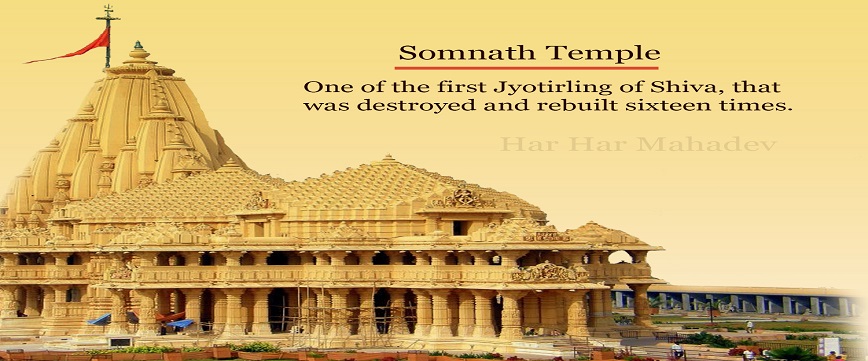
The original Somnath Temple at this location was made of gold and built by the moon god Somraj. But Ravana had a silver temple built, Krishna made one out of wood, and Bhimdev built it from stone. However, the current structure is traditional and symmetrical and was built on the original coastal site. The creamy-colored building bears a few fine sculptures including one of Shiva as a lingam which is considered to be one of the 12 most sacred Shiva lingas or jyotirlingas.
In 1024, the legendary looter Mahmud of Ghazni entered the temple. He and his army won the battle after a two-day siege and stripped the temple of its fabulous wealth. The Mughal ruler Aurangzeb destroyed what remained in 1706. In 1950, the temple was rebuilt entirely.
This intricately carved honey-colored temple is known as the site where one of the 12 holy jyotirlingas emerged in India. It lies at the meeting of three rivers and faces the waves from the Arabian Sea. The ancient temple's timeline can be traced back to 649 BC but is believed to be older than that. The present form was reconstructed in 1951. Colorful dioramas of these events line its north side, but it's hard to see them through the fogged-up glass.
The best time to visit the Somnath Temple is October to November because it's less crowded. Shivratri and Kartik Purnima are celebrated with great enthusiasm during this time.
Find here the detailed information about the religious places and temples in India.
Check out for the ultimate source of information on Indian temples and spiritual destinations. Click here to know more about Mata Vaishno Devi Mandir in Jammu & Kashmir History, Darshan Timings, Registration & Yamunotri Temple in Uttarakhand History, Pooja Timings, Opening & closing Date.
For more information visit: Somnath Jyotirlinga Temple